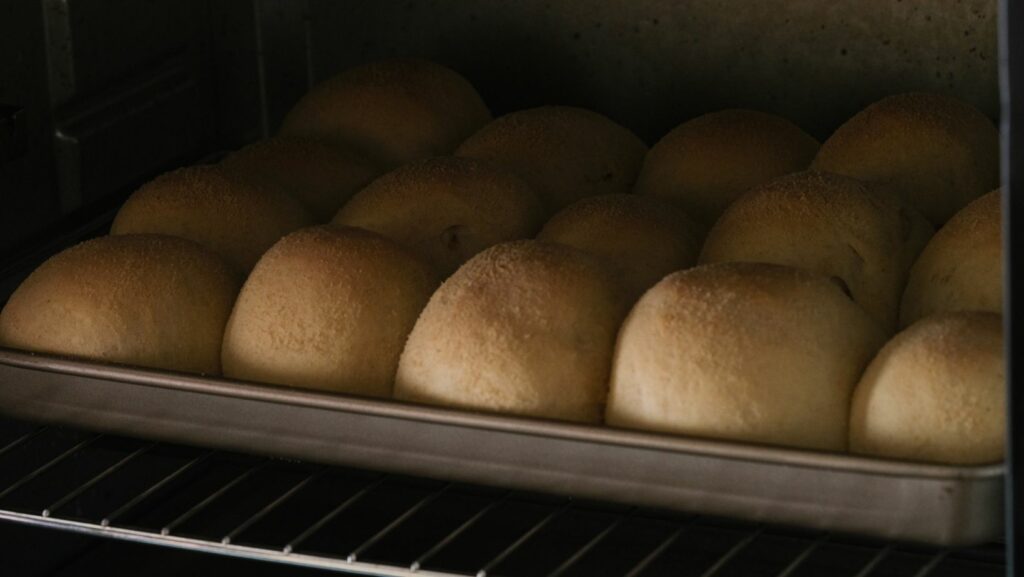When baking bread, one of the most crucial factors is the temperature at which you bake it. The right temperature ensures that your bread rises properly, develops a beautiful crust, and has a soft and fluffy interior. So, what temperature should you bake your bread? Well, it depends on the type of bread you’re making.
For most yeast-based bread recipes, a common starting point is preheating your oven to 425°F (220°C). This higher temperature allows for an initial rapid rise and helps develop a golden crust. However, as every range is slightly different, I recommend keeping an eye on your loaf as it bakes and adjusting the temperature if necessary.
On the other hand, if you’re baking enriched loaves of bread like brioche or challah that contain butter or eggs, it’s best to lower the oven temperature to around 375°F (190°C). This lower heat ensures even baking without browning too quickly.
Remember that these temperatures are just guidelines and may vary based on personal preference and recipe specifics. Always refer to your recipe for specific instructions regarding baking temperatures.
What Temperature to Bake Bread
When deciding what temperature to bake your bread at, consider the type of bread you’re making and follow recipe recommendations. By understanding how different temperatures affect various types of dough, you’ll be able to achieve perfectly baked loaves with delightful results.
When baking bread, choosing the right temperature is crucial for achieving that perfect loaf. The temperature you bake your bread can affect its texture, rise, and overall flavor. So, how do you determine what temperature to bake your bread at? Let’s dive in and find out.

- Consider the recipe: Start by referring to the recipe you’re using. Most bread recipes will provide specific instructions regarding the baking temperature. Follow these guidelines as a starting point.
- Know your oven: Every oven is different, and they can vary in accuracy and performance. It’s essential to understand how your oven behaves regarding temperature regulation. Invest in an oven thermometer to ensure your oven is heating to the desired temperature as indicated on its display.
- Traditional versus rapid-rise yeast: Different types of yeast may require different baking temperatures. Traditional yeast typically requires a longer rise and lower baking temperatures around 375°F (190°C). Rapid-rise or instant yeast allows quicker rising times and higher baking temperatures around 400-425°F (205-220°C).
- Crust preference: The desired crust of your bread also plays a role in selecting the right temperature. For a softer crust, opt for a slightly lower baking temperature of around 350-375°F (175-190°C). For a crispy crust with more color, go for higher temperatures between 400-450°F (205-230°C).
- Adjusting for loaf size: Larger loaves require slightly lower temperatures and longer baking times than smaller ones to ensure even cooking.
Remember that these are general guidelines, but adjusting based on personal preference or specific recipes is always recommended.
Final Thoughts
When it comes to baking bread, understanding yeast activation is crucial. The temperature at which you activate the yeast can greatly impact the outcome of your bread. Determining the right temperature to bake bread involves considering recipe instructions, knowing your oven’s behavior, understanding yeast types and crust preferences, and adjusting loaf size if necessary.
By paying attention to these details, you’ll be ready to bake delicious homemade bread. Happy baking!









